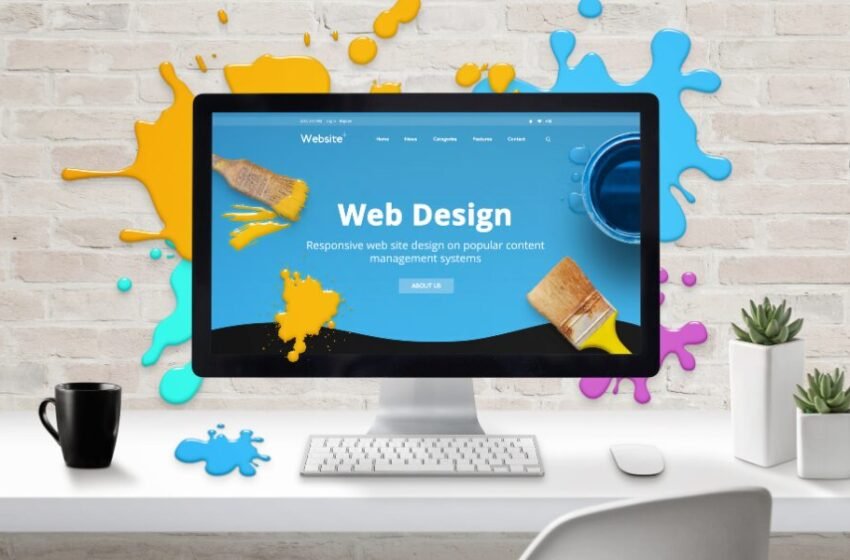
A professional web design company understands that true digital success starts with inclusivity. A beautifully designed website is meaningless if some users can’t access it. Website accessibility ensures that everyone — including people with disabilities — can navigate, understand, and interact with your content easily.
By prioritizing accessibility, a web design company not only complies with global standards but also builds trust, enhances user experience, and improves SEO performance. In this article, we’ll explain why accessibility matters and how you can make your website usable for everyone.
What Is Website Accessibility?
Website accessibility refers to designing and developing websites so that people with disabilities can perceive, navigate, and interact with them effectively.
This involves creating content that works well with assistive technologies such as screen readers, voice recognition tools, and keyboard navigation.
The Web Content Accessibility Guidelines (WCAG) are the international standard for digital accessibility. They are built around four key principles:
Perceivable – Information must be shown in a way that viewers can understand, such as by substituting text for visuals.
Operable – Users should be able to navigate and use controls with various input methods, such as keyboards or voice.
Understandable – Content should be easy to read, predict, and operate.
Robust – The website should function well across devices, browsers, and assistive technologies.
Why Accessibility Matters for Businesses
Whether you’re a startup or an established brand, an accessible website can make a huge difference in how users experience your digital presence. Here’s why every web design company should prioritize accessibility:
1. Legal Compliance
Many countries have laws mandating digital accessibility. In the U.S., the ADA (Americans with Disabilities Act) enforces web accessibility. Lawsuits and financial penalties may result from noncompliance.
2. Better User Experience
An accessible design improves usability for everyone. Features like larger text, keyboard shortcuts, and closed captions benefit users with or without disabilities.
3. SEO Advantage
Accessibility and SEO go hand in hand. Search engines reward well-structured, easy-to-navigate websites. Alt text, proper heading tags, and clear content organization can boost rankings.
4. Expanding Audience Reach
According to the WHO, over 1 billion people live with some form of disability. An accessible website opens your business to a massive, often underserved audience.
5. Enhanced Brand Reputation
A web design company that focuses on inclusivity builds trust. It shows that your brand values equality, empathy, and professionalism.
Practical Steps to Make Your Website Accessible
1. Add Descriptive Alt Text to Images
Alt text (alternative text) describes images for users who rely on screen readers. Instead of vague descriptions like “photo1.jpg,” use meaningful alt text, such as “designer working on a website layout on a laptop.”
2. Ensure Full Keyboard Navigation
Your website should be fully usable without a mouse. Test it using only the Tab, Enter, and Arrow keys to ensure users can navigate menus, links, and forms.
3. Maintain Proper Color Contrast
Good contrast between text and background makes content readable for users with visual impairments. Use tools like Contrast Checker to ensure at least a 4.5:1 ratio.
4. Provide Captions and Transcripts for Multimedia
Videos should include captions, and audio files should have transcripts. This helps users who are deaf or hard of hearing — and it’s great for SEO too.
5. Use Clear, Simple Language
Avoid technical jargon where possible. Write in a conversational tone so users of all reading levels can understand your content easily.
6. Structure Your Content with Headings
Properly use heading tags (H1, H2, H3). This creates a logical content hierarchy that screen readers and search engines can follow.
7. Optimize Forms for Accessibility
Label each form field clearly, include helpful placeholder text, and display error messages that explain what went wrong.
8. Implement ARIA Attributes
ARIA (Accessible Rich Internet Applications) roles improve how screen readers interpret interactive elements. For instance, role=”navigation” or role=”banner” helps define page regions.
9. Build Responsive, Mobile-Friendly Layouts
Accessibility isn’t limited to desktop. A responsive design ensures that users on smartphones, tablets, and assistive devices have the same experience.
10. Test Your Website Regularly
Use accessibility testing tools such as:
- WAVE Web Accessibility Tool
- Google Lighthouse
- axe DevTools
- Site improve Accessibility Checker
Regular audits help ensure that updates or design changes don’t accidentally break accessibility.
Accessibility Best Practices for Web Design Companies
As a professional web design company, accessibility should be integrated into every stage of your workflow — from design concepts to code implementation.
Designers: Choose accessible color palettes, large readable fonts, and user-friendly layouts.
Developers: Use semantic HTML and follow WCAG 2.1 AA guidelines. Avoid elements that rely only on color for meaning.
Content Creators: Write meaningful link text (“Learn more about our services” instead of “Click here”). Add alt text for images.
Project Managers: Include accessibility testing as a standard step in your development lifecycle.
By embedding accessibility into your process, you’ll deliver websites that meet compliance standards and create a more inclusive web.
Common Accessibility Mistakes (and How to Avoid Them)
- Missing or incorrect alt text
- Poor color contrast
- Unlabeled form fields
- No keyboard navigation support
- Auto-playing videos or pop-ups
- Complex language and unclear instructions
- Fixing these errors not only enhances accessibility but also boosts usability for all users.
The Business Value of Inclusive Web Design
Accessibility is more than a compliance checkbox — it’s a growth strategy. When your web design company delivers inclusive websites, you help your clients:
- Attract more visitors and customers
- Improve brand loyalty and trust
- Enhance SEO and engagement metrics
- Reduce legal risks
- A website that everyone can use is a website that works for your business.
Building an accessible website is one of the best investments you can make in your digital presence. For a forward-thinking web design company, accessibility isn’t just a feature — it’s a foundation.
FAQs
Website accessibility means designing and developing websites that everyone can use, including people with disabilities. It ensures that users with visual, auditory, cognitive, or motor impairments can access and interact with your content easily.
An accessible website expands your audience reach, improves user experience, and shows social responsibility. For businesses, it enhances brand reputation, helps avoid legal risks, and improves SEO rankings.
Everyone benefits — not just users with disabilities. Accessible design improves usability for all visitors, including those using mobile devices, slow internet connections, or temporary impairments like a broken arm or bright sunlight.
The key principles are based on the WCAG guidelines — Perceivable, Operable, Understandable, and Robust (POUR). This means your website’s content should be visible, usable, easy to understand, and compatible with different devices and assistive technologies.
To verify accessibility compliance, utilize programs like WAVE, Lighthouse, or axe DevTools.







